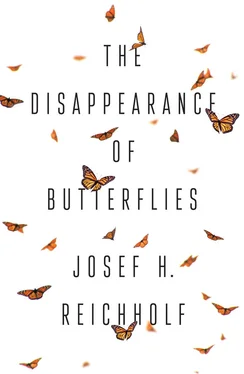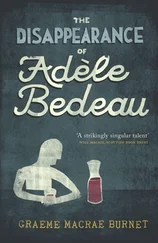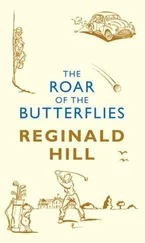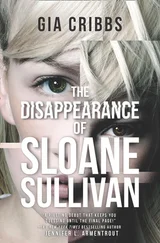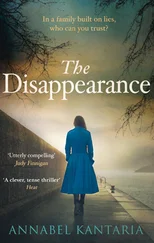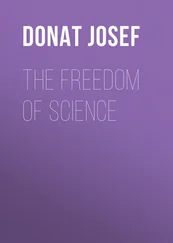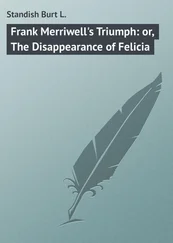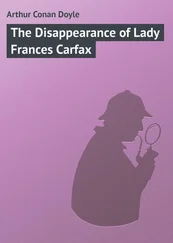I thank my doctoral supervisor, the late Dr Wolfgang Engelhardt, for proposing the topic of aquatic moths and the extensive engagement in nature conservation that this led to, at a time when he himself was president of the Deutscher Naturschutzring. Through his suggestion, he effectively set the course of my professional life as a zoologist. Of central importance also was the Bavarian State Collection of Zoology (ZSM): a unique institution, where, as a member, one could feel ‘butterflies’ in one’s stomach, while above, on the roof, real blue butterflies blithely flew around. It is beyond my abilities to try to put into words my gratitude for my time spent at the ZSM and my time as a teacher at both of the Munich universities, even though my essential attitude to life was formed professionally by these experiences. I am grateful to my wife, Miki Sakamoto-Reichholf, for the fact that I was able to combine them so well with my private life. She shares my enthusiasm for moths and butterflies.
It is a great pleasure to me to see my book translated into English, which opens my findings to an international audience. Some aspects, however, refer to the regional situation in Germany, especially in Bavaria and the adjacent regions of Austria. Others are of a much more widespread coverage. We are faced with the fact that the decline of butterflies, moths and other insects is a global phenomenon of our time. Many local and regional findings can be fitted together like a mosaic to create a picture that is already quite clear. It shows the continuing loss of biodiversity and natural richness.
I would like to thank Polity, especially Elise Heslinga, and the translator Gwen Clayton for their engagement. For me, it was a highly rewarding experience to work together with them in order to achieve a good translation. In my thanks I would also like to include John F. Burton for his highly valuable contributions to the English edition of my book. Last but not least, it is my hope that readers will be infected by the enthusiasm that I have felt throughout my years of research on moths and butterflies. This book is about their life and their future.
In the last 50 years, our moth and butterfly populations have declined by more than 80 per cent. Perhaps only older people will recall a time when meadows were filled with colourful flowers and countless butterflies fluttered above. Nobody would have thought of wanting to count them then. Why would you! Butterflies belonged to summer, just like bees and wildflowers. Larks sang from early spring until mid-summer. They would sing from first light, suspended in the air over the fields. There were yellowhammers, partridges, hares. Frogs lived in the ditches and ponds. In the 1970s, treefrogs still called so loudly from a pool near my home at the edge of the fields that their chorus was audible through the veranda door during a telephone interview with the Bayerischer Rundfunk. The topic: proceedings at the Bavarian District Court regarding noise pollution caused by frogs.
I became familiar with butterflies when I was just a child. I saw dozens of large swallowtails with their distinct black lattice over pale-yellow wings. They flew to our vegetable garden to lay their eggs on carrot leaves. Their green caterpillars with red spots gave me particular pleasure when I discovered them weeks later. If I touched them near the front, they would shoot out the strangest orange-yellow fork from a wrinkle behind their head. They emitted a peculiar odour that I later learnt was a deterrent.
Blues of various species, which I could not tell apart at the time, flew over the meadows that stretched from our little house at the edge of the village to the woodland along the river. The shimmering blue butterflies were so abundant that, looking back, I could not even have estimated how many there were. One barely noticed the cabbage whites. They were part of the nature that surrounded us, like the chirruping of the field-crickets in May and June and the chirping of the grasshoppers in midsummer. I used to enjoy tickling the field-crickets out of their burrows with a stem of grass. Their bulky, brawny-looking heads amused me. There did not seem to be much going on in there – they were so easily tricked.
In the pollarded willows by the stream that snaked through the meadows behind our house, hoopoes would make their nests. With raised crests, they would stride around the grazed pastures, nodding their heads and poking around in the cowpats left behind by the cows. These birds were in the pastures during the day throughout the whole summer and far into the autumn. The air would teem with starlings. These black-feathered birds would follow the cows as if obsessed, sometimes even sitting on their backs. Every garden had at least one nestbox attached to a high pole for the starlings. When the cherries ripened, they feasted and took a significant share and made themselves heard in the process. Driving starlings away from the cherry trees was a great pleasure for older children, since they were allowed to climb right up into the tree crown, where the cherries dangled in front of their mouths. At our house, a colony of sparrows lived under the roof – a good dozen, maybe even more. They were always there, but our cat paid no attention to them. She went mouse-hunting and was very successful. A country idyll. Romanticized memories of childhood and early youth in a valley of the lower reaches of the River Inn, Lower Bavaria?
Perhaps nostalgia has affected our perception of the past. For this reason, one must be conscious of every attempt to reconstruct the ‘former’ as a basis for the ‘present’. Memory supplies whatever we would like to have had, and it tends towards nostalgia and a yearning for what is gone. Nevertheless, I shall begin this book with descriptions of the natural beauty and abundance that I once experienced myself, in part to explain why the disappearance of the butterflies affects me so deeply. The first part of the book is intended to provide the basis from which we can make a judgement about the loss of the species. I have selected my examples so that the reader need not be a specialist in order to have observed and experienced similar things. These examples come from my own work and observations in Bavaria, but could equally have been taken from similar studies elsewhere in Europe or in the British Isles.
Together, these examples ought to show that the abundance of moths and butterflies, for reasons that are yet to be explained, has nevertheless shown a generally downward trend over at least the last 50 years (bearing in mind that it has always fluctuated substantially). The causes of this are discussed in the second part of the book. In order to do this, it is crucial to distinguish ordinary fluctuations from the general trend. This is critical, not only for understanding the natural cycles, but also for identifying the correct measures required to reverse the downward trend. It will not be achieved, for example, by simply reducing the application of poisons, as worthwhile as this might be. Whatever we commonly associate with ‘green’ and ‘eco’ holds its own problems with respect to the conservation of species. The second part of the book will therefore inevitably touch on environmental policy. The ecology movement lost its claim to scientific integrity, in my opinion, when it was converted into a ‘nature religion’ through crises that lent themselves to political manipulation. I am ready to be contradicted: I am used to this and it belongs to the principle of scientific discourse. Such discourse differentiates itself from the exchange of publicly entrenched opinions by accepting better findings. This makes natural science stronger, but also increasingly unpopular. It remains qualified and flexible, while people today seem to delight in dogmatically countering one principle with another. Scepticism does not disqualify you from being a natural scientist; instead, it is the praiseworthy habit of someone who does not submit to dogmas, even if they are currently supposed to be in fashion.
Читать дальше
